
Pahalgam is a tourist town and a notified area committee in Anantnag district of the Indian state of Jammu & Kashmir. It is a popular tourist destination and hill
station.[1] It is located 45 kilometres (28 mi) from Anantnag on the banks of Lidder River at an altitude of 7,200 feet (2,200 m). Pahalgam is the headquarters of
one of the five tehsils of Anantnag district. Pahalgam is associated with the annual Amarnath Yatra. Chandanwari, located 16 kilometres (9.9 mi) from Pahalgam is the
starting point of the yatra that takes place every year in the months of July–August.

For centuries, the pastoral lands of Pahalgam were used for grazing cattle, by nomadic herdsmen. Upto 1346 A.D., Kashmir was ruled by Hindu kings, before being conquered by Shams-Ud-Din. A Turkish-Mughal military general named Mirza Muhammad Haider Dughlat conquered the area in the early 1400s. Several rulers like Sultan Said Khan of Kashgar, Sultan Ghiyas-ud-Din Zain-ul-Abidin and Emperor Humayun also ruled the area. In 1586, Kashmir was invaded by the Mughal Empire under Akbar, but in 1757 Ahmed Shah Durrani conquered it, along with Afghanistan. In 1819, Maharaja Ranjit Singh of the Sikh Empire annexed Kashmir, following the British rule from 1846, who later sold Kashmir to Maharaja Gulab Singh of Jammu, for Rs 7.5 million. The Jammu & Kashmir state remained as an independent state during the British rule until the partition of India, following which Maharaja Hari Singh acceded to the union of India.

The culture of Pahalgam is a beautiful blend of Mughal and Kashmiri cultures, evident in its local cuisine, handicrafts, folk dance and festivals. Pahalgam is the place where the annual Amarnath Yatra commences, attracting Hindus from across the country. Dedicated to Lord Shiva, the Amarnath cave is just 28 km from Pahalgam. Like other Kashmiri towns, Pahalgam is known for its colourful handicrafts, woollen clothes, shawls, lavish carpets, etc. Pahalgam is a great place to relish authentic Kashmiri cuisine, but you can also find other Indian delicacies in the restaurants. Kashmiri food includes dishes such as Dum Aloo, Rogan Josh, Wazwan, etc. A special type of green tea is popular in Pahalgam, containing cinnamon, saffron strands, cardamom, walnuts and almonds. The town is popular for Kashmiri folk music and ghazals. There are various cultural events in the town.
Pahalgam experiences a subtropical highland climate, accompanied by long and cold winters and short, mild summers. During summers (March to June), the temperatures typically range between 12 °C and 20 °C. It is the most preferred tourist season. The monsoon starts in July and lasts till September, when the town experiences mild rainfall unlike other hill stations. The winters last from October to February. It is during this season that Pahalgam turns into a magical snowy paradise. The mercury levels can drop as low as -2.5 °C, so pack enough warm clothes and snow boots, if you are planning your trip during winters.

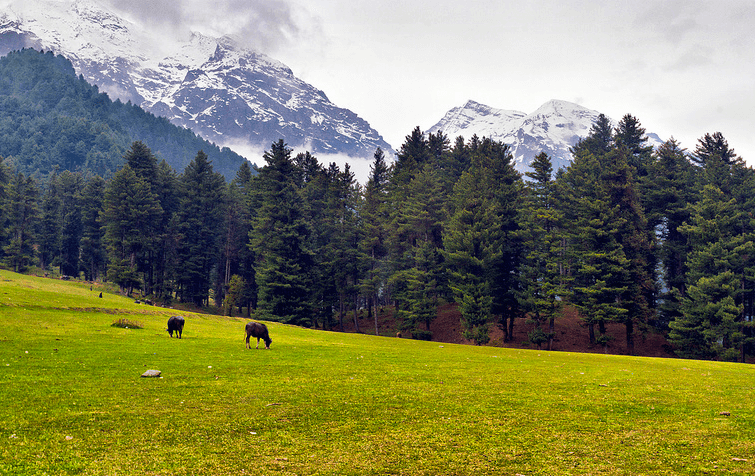
Known worldwide as the ‘Mini Switzerland’ owing to its long, dark meadows looking like those found in Switzerland, Baisaran is a picturesque glade, set just 5 km far from Pahalgam. The thick pine timberland that lends the green-carpet look to the glade gives a differentiating hue to snow-topped crests of the encompassing mountains. One of the top places to visit in Pahalgam, a trip to the knoll is really a treat for the senses. Furthermore, Baisaran is a perfect campground for trekkers who wish to travel further up to Tulian Lake. To get there you need to ride the ponies. An off-beaten track it lets one enjoy panoramic views of the Lidder Valley.
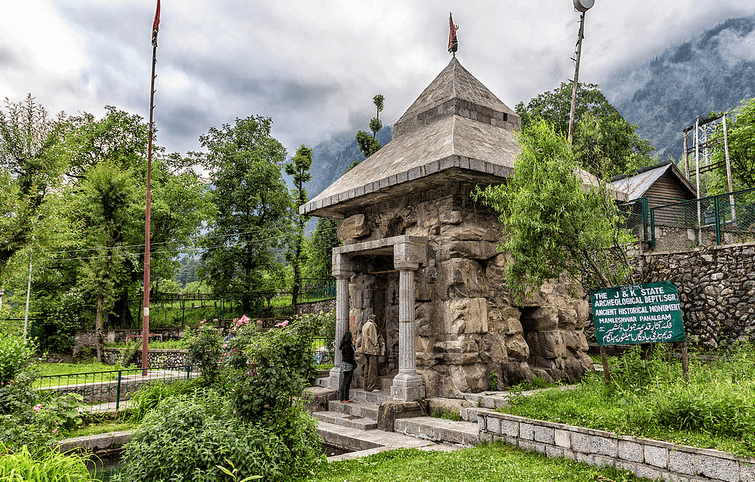
With a rich history dating back to the 12th century, Mamaleshwar is among the ancient temples in Pahalgam. Set on the bank of River Lidder, the temple is dedicated to Lord Shiva. The temple encloses a plinth and a Shiva Lingam, with a sparkling water spring covered by a gorge. Located One km downstream from Pahalgam, tourists generally walk to the temple from the town. The holy complex furthermore has a sanctum that is totally adorned with gold, and was set up during the reign of a former ruler. The temple is unmistakably one of the most attractive tourist places to visit in Pahalgam.

Pahalgam has many things to offer to dedicated explorers. The famous Avantipur Temple, established by Maharaja Avantivarman who ruled from AD 855-883, is one of them. Today, the temple is in ruins yet it is the most visited site for the devout. A wall encases the central shrine, an ideal point to click pictures of this attraction. The eerie ruins of Avantipur gives an impeccable setting to photographers.
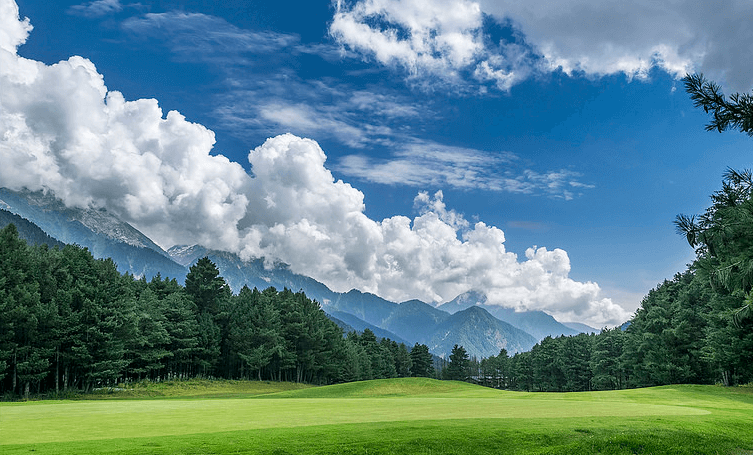
The Pahalgam fairway offers gorgeous views of the azure skies overhead a thick green turf and snow-covered peaks standing tall at the backdrop. For golf aficionados, playing their favorite sport here is a one of a kind experience. But novices too can try a hand at golf amidst the rich ambiance of the Pahalgam Green.
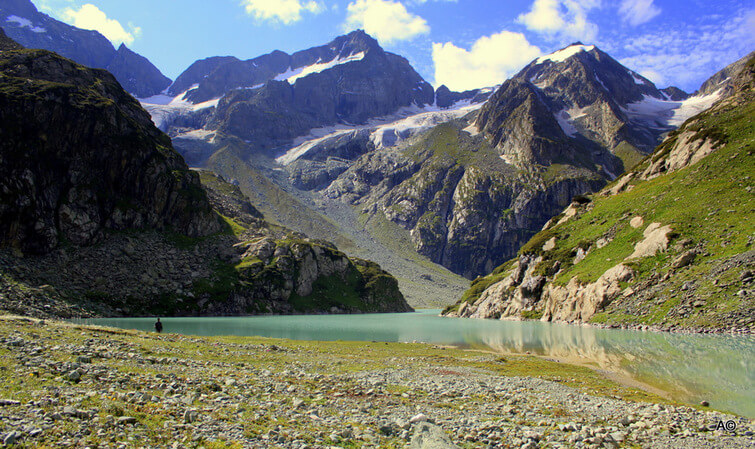
Among the top tourist activities in Pahalgam a visit to the Tulian Lake is a never to miss opportunity. Set in the midst of the Zanskar and Pir Panjal Mountain ranges the lake gives stunning views of the bordering snow-capped peaks that are for the most part 300 meters above its level. Primarily overlaid with snow, Tulian Lake journey is a perfect way to witness the natural beauty of Kashmir Valley. Its way from Baisaran is a bit weary, with unmarked trekking trails, but the barren hills and the eye-catching landscape make up for the tiredness.
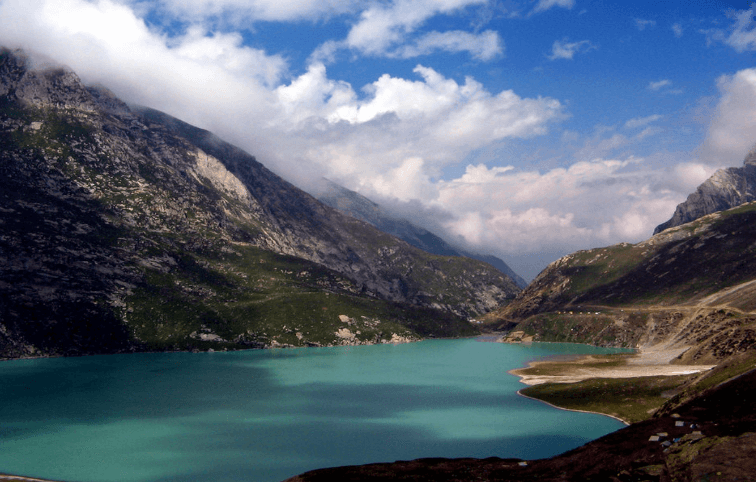
Sheshnag Lake is a notable vacationer destination and pilgrimage site, located close to Pahalgam in Kashmir. Its name originated from Sheshnag – the sacred serpent according to Hindu mythology. According to the legend the serpent burrowed this lake and made it his residence, where he lives to this day. This every travel guide will tell, that in order to reach the lake one needs to take an uphill trek, starting from Chandanwari. Another option is a pony ride. The picturesque surroundings of this lake comprise of green meadows and snow-covered hills. The lake is also habitat of brown trout fish.
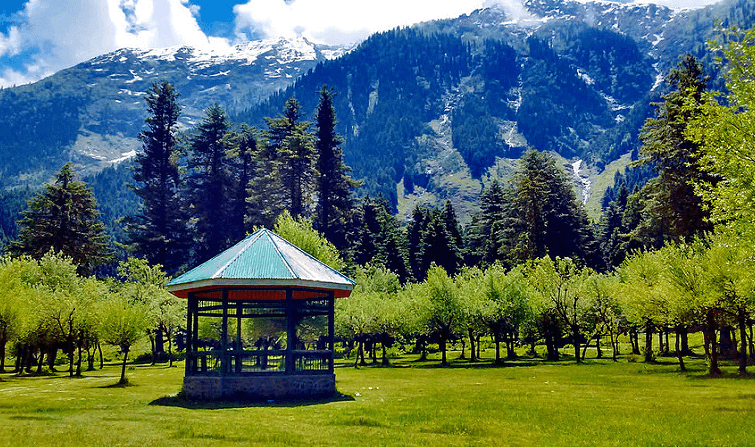
Betaab Valley is a beautiful spot located in the upper east side of Pahalgam. This valley ascribed its name to the hit Bollywood film Betaab, which was shot in its picturesque surrounding. Sprawling lush meadows, snow-topped peaks and winding streams form the amazing topography of this valley. Aside from being a spot with noteworthy topography, the valley is a well known trekking base and campground for voyagers who are looking to scout the adjacent highland regions. The secluded settings, and the natural lush surroundings of the Betaab valley attracts many just-married couples, who are on a honeymoon tour to Kashmir.
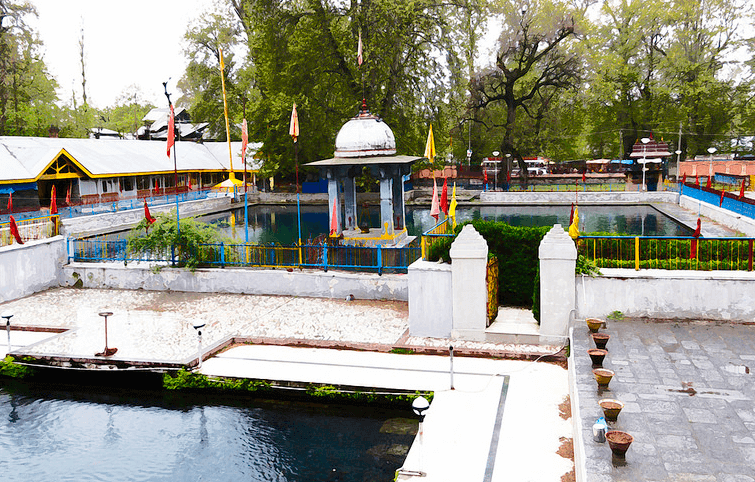
Mattan, located a couple of kilometers from Anantnag on the Pahalgam road, is a sacred Hindu pilgrimage site. The holy place attracts large number of devotees from all parts of the country. It is one of those religious spots in India where the ministers and savants used to assemble for worshiping the Sun God. The temple is well known for its lovely Shiva Lingam, which is safeguarded inside a captivating brick structure encompassed by clear blue water on all sides.

Spice Jet and Air India are operating daily flights from New Delhi to Kangra Airport (Gaggal Airport) which is just 40 km from Palampur

Palampur is well connected by road to all major cities and towns in and around the state. Pathankot-Mandi National Highway 154 (India) (Old NH 20) is the major
highway that passes through Palampur. Himachal Road Transport Corporation (HRTC) is the best way to travel plying Air conditioned, Deluxe and Semi Deluxe buses from
major cities like Delhi and Chandigarh. Distances to the major cities are Delhi (530 km), Chandigarh (254 km), Shimla (259 km), Manali (205 km), Mandi (95 km),
Kangra (38 km) etc. Tickets can be booked online from HRTC website.
HRTC volvo (AC) buses can be taken from ISBT Kashmere Gate, Delhi/ ISBT Sector-43, Chandigarh to reach Palampur.

Palampur is connected by the narrow gauge Kangra Valley Railway from Pathankot. The railway station is named Palampur (Himachal). It is situated at Maranda, 4 km from bus stand. Do not be confused if people mention Maranda station, although the official name is Palampur (Himachal). The station is about 112 km from Pathankot. The journey takes about 6–8 hours covering two tunnels, one of which is only 250 feet and the other 1,000 feet in length. There is no reservation system in the train but you can buy a current ticket from the ticketing counter and search for a seat. There are chances that the train may breakdown in the middle. Also the journey may take 8–12 hours.
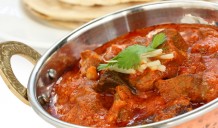
Kashmiri Wazwan cuisine is primarily famous for its non-vegetarian dishes and Rogan Josh is its signature dish. This spicy red lamb-based curry is ideally eaten with saffron rice. .